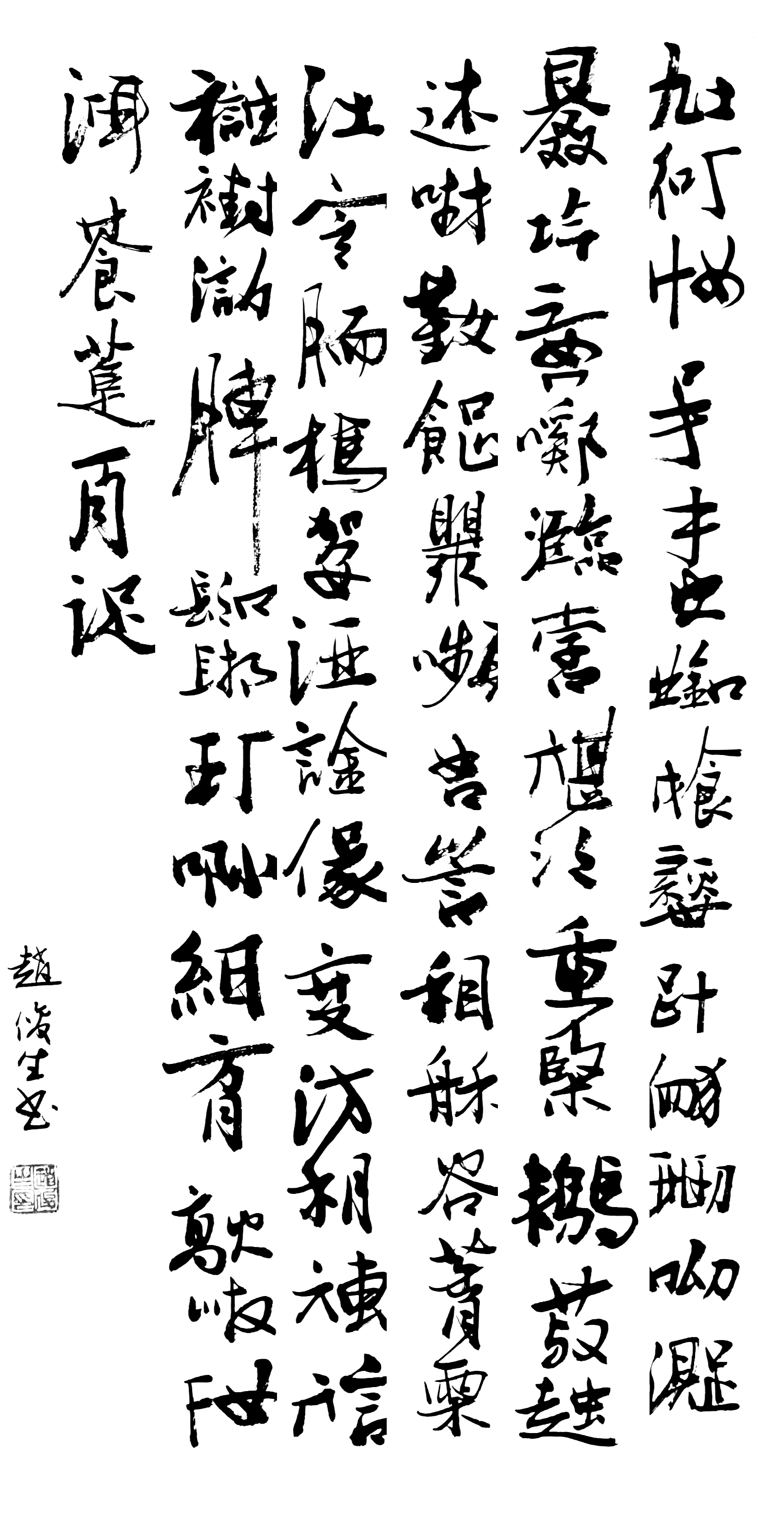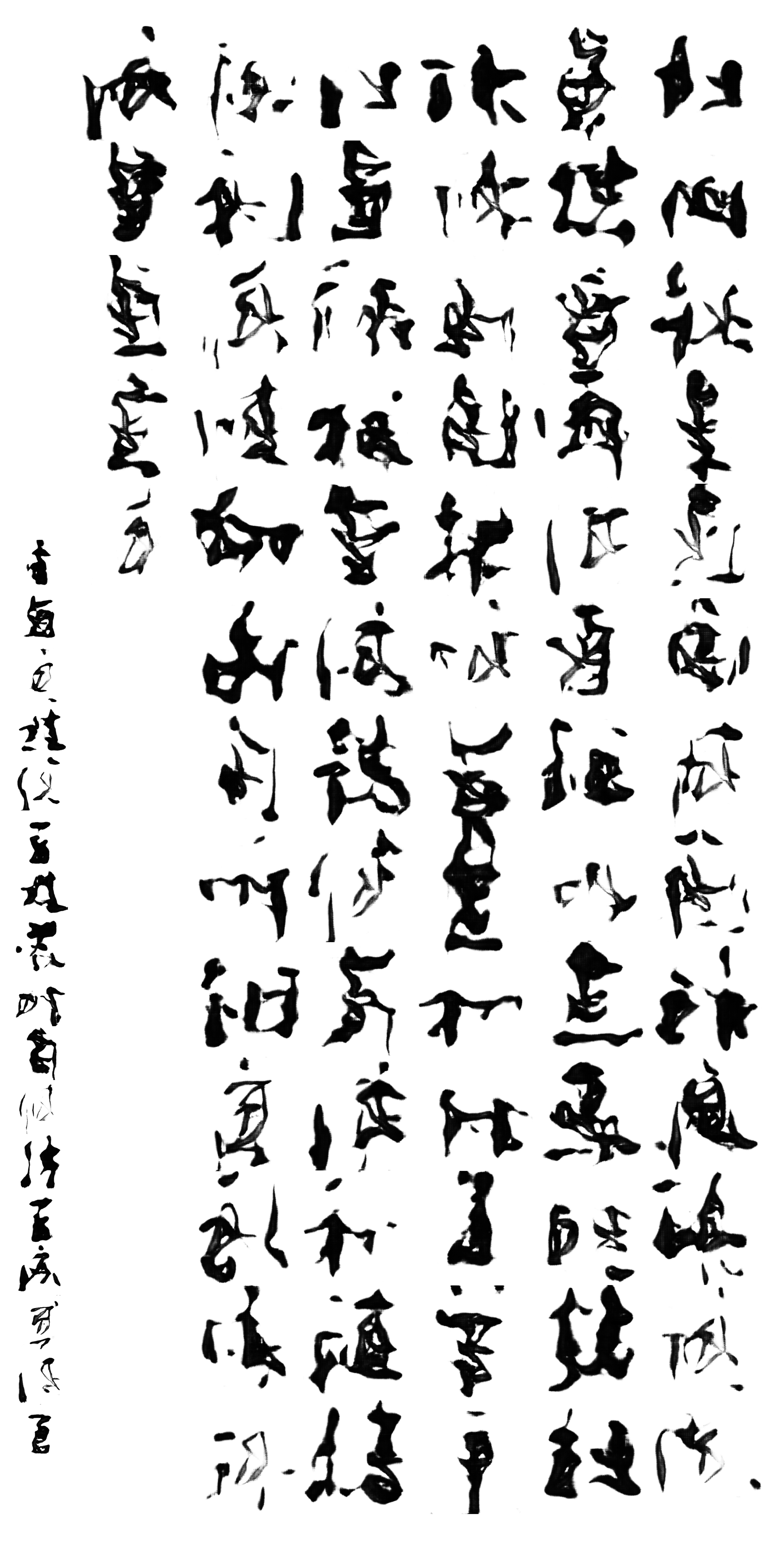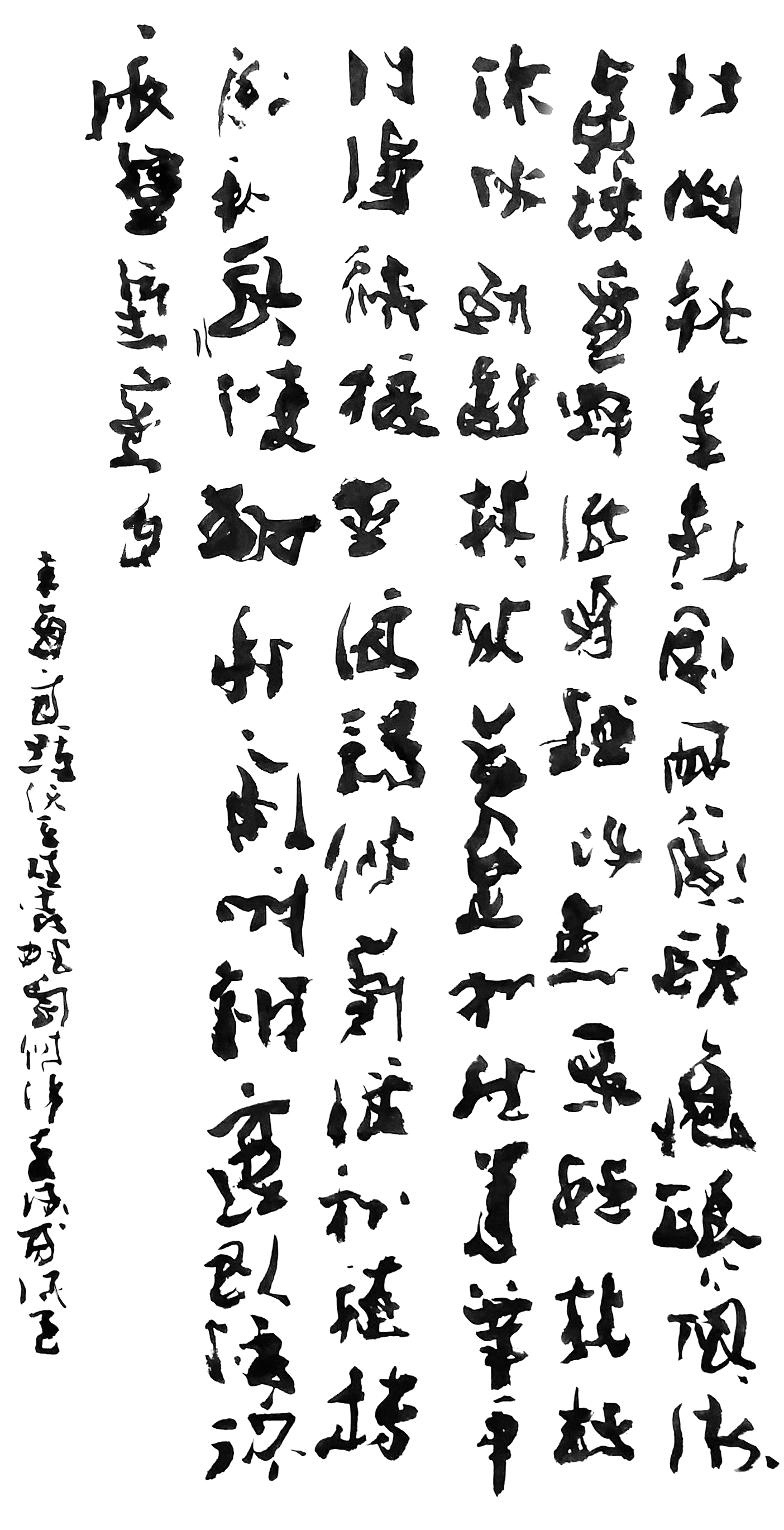-> Dec. 2021
-> Ink calligraphy work on paper; digital print on paper
-> Keywords: Computational Art, Machine Learning, Pix2Pix, Chinese Calligraphy
-> Documentation of Technical Processes
-> Demo of RRPL
-> Reference
-> What else?
Dad, Will You Teach Me Calligraphy? reflexes on learning and machine learning, and the intimate relationship between a father and a daughter. This is a project in which I collaborated with my dad.
For years my dad has been self-learning calligraphy, and recently he has started to develop his own style. I collected pieces of his calligraphy work and trained a machine-learning algorithm that learns to transfer sketches of Chinese characters into my dad’s style of calligraphy.
A piece of custom software was then developed to generate sketches of non-existent Chinese characters (characters that look like Chinese but actually make no sense), and the outputs were transferred into dad’s calligraphy style by the machine learning model. The outcome is a machine-generated calligraphic work with characteristics of my dad’s writing style but hardly within the context of the Chinese language. My dad then reproduced this generated piece with his brushes, imitating the sample as close as possible.
While traditional calligraphic art often emphasizes sophisticated craftsmanship and year-by-year practices, neural networks can learn the calligraphy style and create new and stylized calligraphy work within a considerably shorter period. This two-way imitation – machine imitating dad’s style and dad imitating the generated output – is not only a recursive cycle where new aesthetic strategies emerges, but also an alternative perspective of looking at “learning a traditional art form” in the modern context.


